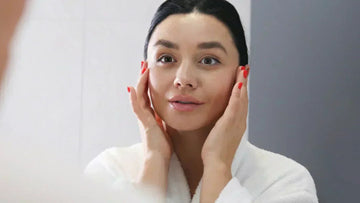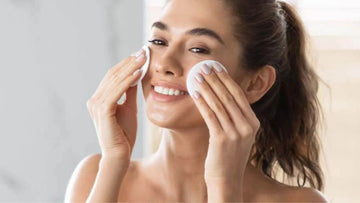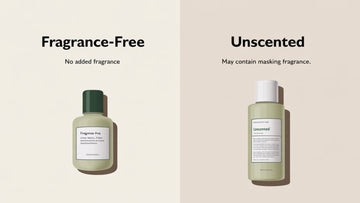Tanning is a natural reaction of your skin to the sun’s ultraviolet (UV) rays, where the skin darkens as it produces melanin to protect itself from UV damage. However, with the rise of skincare awareness, people are often looking for ways to enjoy the outdoors while minimizing the chances of tanning. This brings us to a common question: Does sunscreen prevent tanning? In this blog, we’ll explore how sunscreen works, whether it can protect you from tanning, and the best practices to prevent tanning while enjoying the sun.
How Sunscreen Works to Protect Your Skin
Sunscreen, also known as sunblock, acts as a protective barrier against harmful UV rays. There are two types of UV rays that affect our skin: UVA and UVB. UVA rays penetrate deeper into the skin, leading to aging and wrinkles, while UVB rays are responsible for causing sunburns. Both types of rays can contribute to skin cancer and damage.
Sunscreens work in two key ways:
-
Physical Sunscreen (Mineral-based): This type sits on the surface of your skin and reflects UV rays away from it. Common ingredients include zinc oxide and titanium dioxide. These ingredients provide broad-spectrum protection and are especially good for people with sensitive skin.
-
Chemical Sunscreen: This type absorbs UV rays and transforms them into heat, which is then released from the skin. Common ingredients include avobenzone, oxybenzone, and octinoxate. Chemical sunscreens tend to be lighter on the skin but may irritate some individuals.
But the big question remains: Does sunblock prevent a tan? The short answer is yes, up to a certain degree. Sunscreen is designed to block the UV rays that cause tanning. However, no sunscreen is 100% effective, and the level of protection depends on the SPF (Sun Protection Factor) and the amount applied.
Does Sunscreen Remove Tan?
While sunscreen does not remove a tan, it plays an essential role in preventing further tanning and skin damage. Once a tan has occurred, sunscreen will not reverse the process. The melanin in your skin, which darkens in response to UV exposure, remains until it naturally fades over time. To remove a tan, you would need to rely on skin treatments, exfoliation, and home remedies that brighten the skin.
Sunscreen’s role here is more preventive. When applied before exposure to the sun, sunscreen can prevent the skin from producing additional melanin and worsening the tan. Regularly applying sunscreen can help your skin maintain its natural tone by reducing further UV damage and promoting healthier skin over time.
Sunscreen to Protect from Tanning
To protect from tanning effectively, using a high SPF sunscreen is crucial. SPF is a measure of how well a sunscreen protects against UVB rays, which are primarily responsible for causing tanning. The higher the SPF, the more protection you get from UV exposure.
For daily use, an SPF of 30 or higher is recommended, while for extended outdoor activities, you may want to opt for SPF 50 or higher. It’s important to note that sunscreen should be reapplied every two hours, or more frequently if you sweat or swim. This ensures that your skin remains protected throughout the day.
How to Prevent Tanning in the Sun
While sunscreen is an essential tool in your skincare arsenal, there are other steps you can take to reduce your chances of tanning when spending time outdoors. Here are some practical tips:
-
Seek Shade: The sun’s rays are the strongest between 10 a.m. and 4 p.m. During this time, try to stay in shaded areas or under an umbrella. This will reduce your exposure to direct sunlight and, consequently, the chances of tanning.
-
Wear Protective Clothing: Clothing can serve as a physical barrier to UV rays. Opt for long sleeves, wide-brimmed hats, and sunglasses to shield your skin from direct exposure. Fabrics with a tight weave and dark colors tend to offer better protection.
-
Use Sunscreen Correctly: Many people apply sunscreen sparingly, which reduces its effectiveness. To ensure maximum protection, apply sunscreen generously on all exposed areas of your skin at least 15 minutes before going outdoors. Don't forget commonly missed spots like the ears, back of the neck, and the tops of your feet.
-
Reapply Regularly: Sunscreen wears off over time due to sweating, swimming, or towel drying. To ensure continuous protection, reapply your sunscreen every two hours or immediately after swimming or sweating.
-
Consider a Broad-Spectrum Sunscreen: Broad-spectrum sunscreens protect against both UVA and UVB rays. Since both types of rays contribute to skin aging and tanning, using a broad-spectrum sunscreen provides the most comprehensive defense against tanning and skin damage.
-
Avoid Tanning Beds: Many people mistakenly think that tanning beds are a safe way to get a tan. However, these artificial UV rays can cause premature aging, increase the risk of skin cancer, and contribute to tanning. The safest option is always to avoid tanning beds altogether.
SPF and Its Role in Preventing Tanning
The higher the SPF, the more effective the sunscreen is in preventing tanning. An SPF 15 sunscreen blocks approximately 93% of UVB rays, while an SPF 30 sunscreen blocks about 97%. A sunscreen with SPF 50 blocks about 98%, but no sunscreen can block 100% of UV rays.
It’s important to understand that SPF does not indicate how long you can stay in the sun without burning. For example, an SPF 30 sunscreen means you can stay in the sun 30 times longer without burning than if you weren’t wearing sunscreen. However, if you’re swimming, sweating, or towel drying, your sunscreen’s effectiveness will diminish, and you’ll need to reapply it to maintain full protection.
Other Measures to Protect Your Skin
Aside from sunscreen, consider using other skincare products that can help protect your skin from sun damage:
-
Antioxidant-rich skincare products can help fight free radicals and prevent skin aging caused by sun exposure.
-
After-sun care products like aloe vera gels or cooling lotions can soothe your skin after sun exposure and help reduce the effects of sunburn or tanning.
Common Myths About Sunscreen and Tanning
There are several myths about sunscreen and tanning that need to be addressed:
-
Myth #1: Sunscreen prevents all tanning. While sunscreen helps reduce tanning, it doesn’t eliminate the possibility of a tan, especially if you're outdoors for extended periods. However, it will prevent further skin damage.
-
Myth #2: Sunscreen is only necessary on sunny days. UV rays can penetrate through clouds and even reflect off surfaces like water or snow. Sunscreen should be applied daily, regardless of the weather conditions.
-
Myth #3: You don’t need sunscreen indoors. UV rays can also reach you indoors, especially if you’re sitting by windows. It’s a good idea to apply sunscreen if you spend a lot of time near windows or in areas with indirect sunlight.
Conclusion
In conclusion, sunscreen is an essential tool in your skincare routine to prevent tanning, sunburns, and long-term skin damage. While it cannot completely stop a tan, using a high SPF sunscreen and following the correct application practices can significantly reduce the likelihood of getting tanned. Remember, sunscreen does not remove tan, but it will protect your skin from further UV exposure and damage.
At Club Derma, we understand the importance of natural and effective skincare. Our range of high-quality, natural skincare and haircare products is designed to protect, nourish, and rejuvenate your skin from within. Whether you are looking for sun protection or deep hydration, Club Derma offers the best in skincare products to help you maintain healthy, glowing skin while embracing the outdoors.






